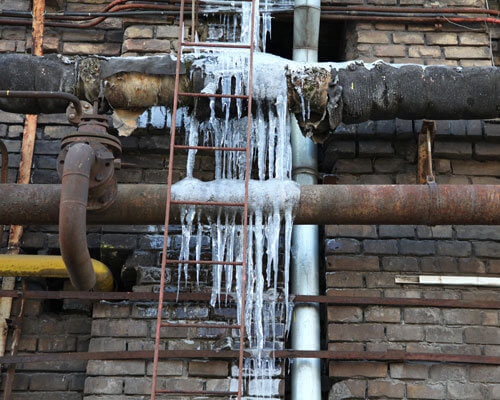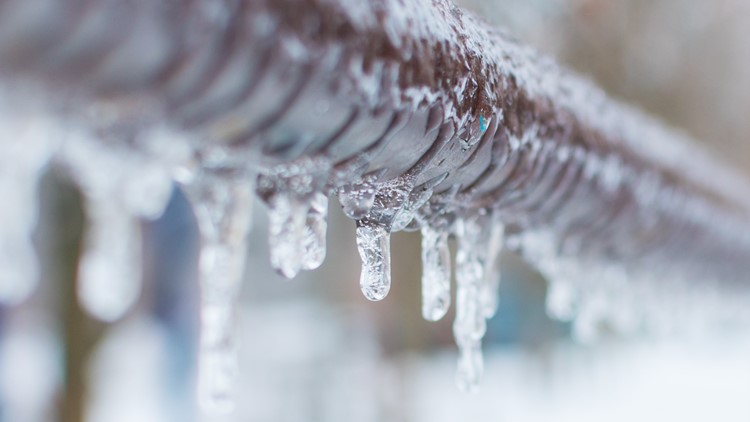Protecting Against Frozen Pipes in Winter: Professional Strategies
Protecting Against Frozen Pipes in Winter: Professional Strategies
Blog Article
The article following next relating to Prevent Frozen Pipes is definitely enjoyable. You should keep reading.

Cold weather can wreak havoc on your plumbing, specifically by freezing pipelines. Below's just how to prevent it from occurring and what to do if it does.
Intro
As temperature levels decline, the threat of frozen pipes increases, potentially bring about expensive repair services and water damage. Understanding just how to stop icy pipelines is essential for home owners in cold environments.
Recognizing Icy Pipelines
What causes pipelines to freeze?
Pipes freeze when revealed to temperature levels listed below 32 ° F (0 ° C) for prolonged periods. As water inside the pipes ices up, it increases, taxing the pipeline wall surfaces and possibly triggering them to rupture.
Threats and damages
Icy pipelines can cause water supply disturbances, residential property damage, and pricey repairs. Ruptured pipelines can flood homes and cause considerable structural damages.
Signs of Frozen Piping
Identifying frozen pipes early can prevent them from rupturing.
Just how to recognize icy pipelines
Search for decreased water flow from faucets, uncommon odors or sounds from pipes, and visible frost on revealed pipelines.
Prevention Tips
Protecting susceptible pipes
Wrap pipelines in insulation sleeves or make use of warm tape to shield them from freezing temperature levels. Concentrate on pipelines in unheated or outside areas of the home.
Heating strategies
Maintain indoor rooms effectively warmed, especially areas with plumbing. Open cabinet doors to permit warm air to circulate around pipes under sinks.
Securing Outdoor Pipes
Garden tubes and outside faucets
Disconnect and drain pipes garden hoses before wintertime. Mount frost-proof faucets or cover outside taps with shielded caps.
What to Do If Your Pipelines Freeze
Immediate activities to take
If you presume frozen pipes, maintain taps open up to soothe pressure as the ice thaws. Make use of a hairdryer or towels soaked in hot water to thaw pipelines slowly.
Long-Term Solutions
Architectural modifications
Take into consideration rerouting pipes far from exterior walls or unheated areas. Add added insulation to attic rooms, basements, and crawl spaces.
Upgrading insulation
Purchase premium insulation for pipes, attic rooms, and wall surfaces. Correct insulation aids keep regular temperatures and minimizes the risk of frozen pipes.
Final thought
Protecting against frozen pipelines requires proactive measures and fast responses. By comprehending the reasons, indicators, and preventive measures, house owners can safeguard their pipes during cold weather.
5 Ways to Prevent Frozen Pipes
Drain Outdoor Faucets and Disconnect Hoses
First, close the shut-off valve that controls the flow of water in the pipe to your outdoor faucet. Then, head outside to disconnect and drain your hose and open the outdoor faucet to allow the water to completely drain out of the line. Turn off the faucet when done. Finally, head back to the shut-off valve and drain the remaining water inside the pipe into a bucket or container. Additionally, if you have a home irrigation system, you should consider hiring an expert to clear the system of water each year.
Insulate Pipes
One of the best and most cost-effective methods for preventing frozen water pipes is to wrap your pipes with insulation. This is especially important for areas in your home that aren’t exposed to heat, such as an attic. We suggest using foam sleeves, which can typically be found at your local hardware store.
Keep Heat Running at 65
Your pipes are located inside your walls, and the temperature there is much colder than the rest of the house. To prevent your pipes from freezing, The Insurance Information Institute suggests that you keep your home heated to at least 65 degrees, even when traveling. You may want to invest in smart devices that can keep an eye on the temperature in your home while you’re away.
Leave Water Dripping
Moving water — even a small trickle — can prevent ice from forming inside your pipes. When freezing temps are imminent, start a drip of water from all faucets that serve exposed pipes. Leaving a few faucets running will also help relieve pressure inside the pipes and help prevent a rupture if the water inside freezes.
Open Cupboard Doors
Warm your kitchen and bathroom pipes by opening cupboards and vanities. You should also leave your interior doors ajar to help warm air circulate evenly throughout your home.

We are very focused on How to prepare your home plumbing for winter weather and I hope you liked the post. Enjoyed our blog? Please share it. Help somebody else check it out. I praise you for being here. Return soon.
Click Here Report this page